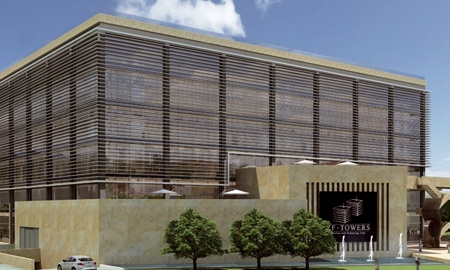In the 1990s Colombia was just another somewhat unknown South American country with an image of violence and drugs attached to it – at least to American and European observers. In the last 15 years, however, this image has changed. Colombia has become a place of many beautiful beaches, mountains and forests to visit, not to mention its sophisticated cities, so full of life, culture and a first-rate culinary offer.
As the country entered a period of peace and security like it hadn’t seen in years, the possibilities to invest in it blossomed: there was so much to do and so many incentives to do it. And that hasn’t changed.
One of those investment opportunities lies in the Bogotá Free Trade Zone (BFTZ), the country’s largest industrial and technological park. The BFTZ was ranked second best free trade zone in the Americas and it offers all sorts of solutions – security, communications, logistics, human resources and infrastructure – to national and international entrepreneurs. Most importantly, the National Tax and Customs Direction (DIAN) has an office inside the BFTZ and years of experience working with its clients, which makes all customs transactions more transparent and agile.
According to BFTZ’s CEO, Juan Pablo Rivera Cabal, “The BFTZ currently manages around 361,000 foreign trade operations for an approximate value of US$14 trillion in merchandise.” This means that, with almost 230 businesses operating inside the park, it manages 12% of all Colombian foreign trade.
The initiative to create FTZs in other parts of the country aside from ports came from President César Gaviria (in the 1990s), but it really intensified during Alvaro Uribe’s administration and, since then – and with special attention from President Juan Manuel Santos – it has been growing at a steady pace. This administration wants to make Colombia a more attractive destination for foreign investment, with the idea that new businesses will generate jobs and promote development in the regions, while encouraging innovation.
And the results have been quite positive. There are over 110 FTZs in Colombia and they generate 112,000 jobs. The Bogotá Free Trade Zone alone generates 23,000 direct jobs and 37,000 indirect ones. Employees of the BFTZ profit from the training they get so they will be able to handle the new and innovative technologies that foreign companies bring into the country.
“We understand that talent is our most important resource,” says Mr. Rivera and explains that they have a social responsibility program that is now inaugurating UNIFRANCA, the first alliance between universities and an FTZ that will function inside the free trade zone. They also already have six professional and technical alliances with the top teaching institutions in the country, to guarantee their personnel’s education.

0 COMMENTS